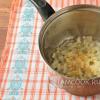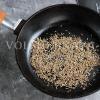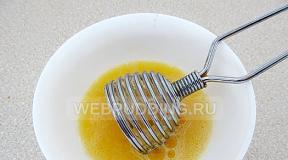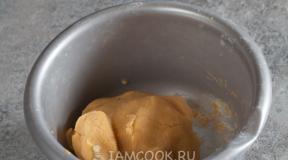Do-it-yourself metal lathe: a simple and inexpensive design for the home. How to choose a metal lathe How to choose a benchtop lathe
Metal parts are constantly required to repair a car. It’s good if the model is common, you can buy it. If the car is rare, you either have to wait a long time for it to be delivered, or order production. In this case, you can purchase a lathe for the garage. If you have experience, you can use it for part-time work.
What types of lathes are suitable for private use?
There are nine types of lathes in total, but not all are needed in the garage. Most often, private owners can see small screw-cutting lathes. Along with processing parts (grinding, drilling, milling, drilling radial holes, etc.), they perform various types of thread cutting and cone turning. People are trying to buy just such a lathe for a garage - it covers almost all the needs of car owners.
Available in two types - tabletop and with a stand (floor-mounted). Tabletop - small, light weight (up to 200 kg) machines. It’s easier to find a place for them in the garage. The disadvantage is that you cannot process large and heavy parts with them. Another point: due to their low mass, they are not always able to provide high processing accuracy.
Floor-standing lathes (usually school lathes) have significantly greater weight and dimensions. For normal operation, a separate foundation must be made for them. Installation on vibration dampers is possible, but they are not easy to find.
Lathe device
In order to choose a lathe, it is advisable to know its structure, purpose, functions and possible parameters of each part. First, let's look at the main components.

These are the main components of a lathe. It makes sense to take a closer look at complex components, since the capabilities and operation of the equipment depend on their execution.
bed
Most often these are two parallel massive metal beams/walls connected by cross members to provide greater rigidity. The caliper and tailstock move along the frame. For this purpose, guide slides are machined on the frame. The tailstock moves along flat guides, the caliper moves along prismatic ones. Prismatic guides for the tailstock are very rare.

Bed for a metal lathe - factory and homemade
When choosing a used machine, pay attention to the condition of the slide and the smooth movement of parts along it.
Front (spindle) headstock
The headstock in modern lathes most often combines a workpiece holder and a device for changing the spindle speed. There are several types of rotation speed control - by moving the levers to a certain position, using a regulator.

The controller with a smooth change in rotation speed is controlled by a microprocessor. In this case, there is a liquid crystal display on the headstock body that displays the current speed.
The main part of the headstock is the spindle, which on one side is connected to the electric drive pulley, on the other has a thread onto which chucks are screwed to hold the workpiece. The accuracy of turning work directly depends on the condition of the spindle. There should be no beats or backlash in this unit.

Guitar of gears - for transmitting rotation and changing its speed
The headstock contains a system of replaceable gears for transmitting and changing rotation to the gearbox shaft. When choosing a lathe for your garage, pay attention to the condition of the gears and the absence of spindle play. The accuracy of workpiece processing depends on this.
Tailstock
The tailstock is movable - it moves along guides on the bed. It is brought to the part, its position is adjusted, the quill rests on the part, holding it in the desired position, the position of the quill is fixed by turning the corresponding handle. After which the position of the tailstock is secured with another locking handle.
In some models, the tailstock is designed not only to support massive or long parts in a given direction, but also to process them.

To do this, depending on the operations performed, the corresponding equipment is attached to the quills - cutters, taps, drills. The additional center of the machine on the tailstock can be stationary or rotating. The rotating rear center is made on high-speed machines for removing large chips and turning cones.
Caliper
A lathe support is a moving part on which tools for processing parts are mounted. Thanks to the special design of this unit, the cutter can move in three planes. Horizontal movement is ensured by guides on the frame, longitudinal and transverse slides.

The position of the cutter relative to the surface of the machine (and the part) is set by a rotary tool holder. In each of the planes there is a lock that ensures retention in a given position.
The cutter holder can be single or multiple. The tool holder is most often made in the form of a cylinder with a side slot into which a tool is inserted and secured with bolts. On simple machines, the support has a special groove into which a recess on the bottom of the holder is inserted. This is how the cutting tool is fixed on the machine.
Lathe for the garage: parameters
First of all, you decide on the mass and type of connection. When choosing a mass, you should not strive to find the lightest machine. Very light ones do not provide stability and can vibrate during operation, which will affect the accuracy of the work. Yes, it is problematic to install heavy machines, but installation is a one-time event and you will have to work regularly. Therefore, weight is far from the most basic selection criterion.

Lathes that are too large cannot be installed in every garage, but small and medium-sized ones are an excellent choice
The type of connection - single-phase or three-phase - is more important. And then, three-phase ones can be connected to 220 through special starters. Among the electrical characteristics, engine power is also important. The higher it is, the higher the rotation speed the lathe can develop. These are general points. There are also special ones:
- The diameter of the workpiece that can be machined. Determined by the processing diameter above the bed and above the support.
- Length of the workpiece. Depends on the move.
- List of operations.
- Maximum speed.
- The adjustment method is smooth, stepwise.
- Possibility of reverse movement.
The dimensions of the processed parts are directly related to the dimensions of the machine. So here we have to look for a reasonable compromise. Usually you don’t want to clutter up your garage too much, but you do need to handle large parts.
Micro and mini lathes
To avoid cluttering your garage, you can find mini or micro lathes. They are distinguished by their very small size and low weight. For example, a micro-lathe for a PROMA SM-250E garage has dimensions of 540*300*270 mm and a weight of 35 kg. It can process workpieces with a length of 210 mm and a diameter of 140 mm. Smooth speed control from 100 to 2000 rpm. Not too bad for this size.

Mini lathes - they belong in the garage
Despite its small size, it can perform the following operations:
- grinding surfaces,
- thread cutting;
- drilling;
- countersinking;
- deployment.
Parts grinding, knurling, and tool sharpening are also possible. The basic operations, as you can see, are present. The disadvantage is that on machines of this type you cannot process any large parts. And another disadvantage of this particular model is the price. This garage lathe costs from $900.
In the same category there are Chinese JET BD-3 and JET BD-6 (price 500-600 $) and domestic KRATON MML-01 (price 900 $), Encore Corvette 401 ($650), German Optimum - from $1300 to 6000 $; Czech Proma - from $900,
Floor options
The choice here is not so wide, because both prices and weight are much higher. There are several proven models that can be installed in the garage.

These are the so-called school machines - TV 4 (its improved version of TV 6), TV 7 and the desktop version of TV 16. With a mass of 280 kg (TV 4) and 400 kg of TV 7, it is desirable to have a separate foundation. If you just put it on a concrete floor, it will break it.
Home lathes are smaller copies of industrial equipment and are designed to perform simple tasks. Using desktop mini-machines, you can perform the following operations:
 Mini metal lathe Proxxon FD 150/E
Mini metal lathe Proxxon FD 150/E - trimming ends;
- thread cutting;
- countersinking;
- grooving of cylindrical and conical surfaces;
- turning of grooves and grooves;
- trimming parts.
Mini-turning machines for home are divided according to functionality and types of operations performed:
- screw-cutting, for example, Caliber STMN-550/35;
- milling, for example, a TV-4 school machine.
The screw-cutting micro-lathe unit is equipped with a drill chuck, with which you can:

- grind all kinds of details;
- make grooves and various recesses;
- trim the edges of the workpieces.
A screw cutting machine can process non-ferrous and ferrous metals.
The milling unit performs the following types of work:
- cutting grooves, both straight and curved;
- chamfering;
- drilling various holes;
- thread cutting.
This micro-lathe allows you to work not only with metals, but also with plastic and wooden parts. This is a more functional option for the home; versatility is ensured by the vertical milling part.
Description of the design of turning units
The design of desktop lathes for home use is slightly different from industrial prototypes. Some spare parts are smaller.
 School machine TV-4 – drawing
School machine TV-4 – drawing The TV-4 and TV-9 school machines have the most traditional design; the main elements are:

A small tabletop metal lathe, for example, Caliber SMT-400, can weigh 50 kg, while the power reaches 500 W.
Bench lathes
The most common models of desktop units for the home:

Micro lathe Proma DSO-1000 – Czech model. Characteristics:
- power – 0.4 kW;
- power supply – 220 V;
- maximum part length – 100 cm;
- maximum diameter of the processed product – 35 cm;
- weight – 35 kg;
- speed – up to 1250 rpm;
- number of speeds – 4;
- cost – 13,500 rubles.
Its main disadvantage is its ineffective work with hard metals; it is more suitable for processing lead, copper, and tin products. It is difficult to find spare parts - you only need original ones.

Metal lathe Caliber SMT-400 made in Russia. Characteristics:
- power – 0.55 kW;
- power supply – 220 V;
- weight – 45 kg;
- speed – up to 2500 rpm;
- cost – 22,500 rubles.
The Caliber machine is a screw machine and can perform all basic turning operations. The gauge shows good results in machining parts made of hard metals. It is easy to find spare parts in case of breakdown.
 Profi-350 – metal machine: made in China
Profi-350 – metal machine: made in China Profi-350 (China). Main characteristics:
- power – 300 W;
- power supply – 220 V;
- maximum part length – 35 cm;
- weight – 54 kg;
- speed – up to 3000 rpm;
- cost – 23,000 rubles.
This unit has a large mass, but thanks to it, stability and more accurate turning work are ensured. In the event of a breakdown, spare parts for it must be ordered from the manufacturer and wait about two weeks.
Models of lathes for the garage
Metal lathe for home BD-9G JET
For the garage, you can choose not only tabletop options, but also units with their own base, for example, TV-4 is a school machine. It provides training in schools and vocational schools. Characteristics:
 The TV-7 screw-cutting lathe is perfect for working in the garage
The TV-7 screw-cutting lathe is perfect for working in the garage - power – 1 kW;
- power supply – 220 V;
- maximum diameter of the processed product – 20 cm;
- weight – 280 kg;
- speed – up to 710 rpm;
- cost – 25,000 rubles.
More powerful, but also larger models have been developed - this is not a school machine, but rather professional equipment:
- TV-6;
- TV-7;
- TV-9.
A Weiss metal lathe (China) is suitable for a garage:
- power – 6 kW;
- power supply – 220 V;
- maximum part length – 30 cm;
- maximum diameter of the processed product – 18 cm;
- weight – 60 kg;
- cost – 67,800 rubles.
Description and dimensions of mini-machines
Modern manufacturers strive to develop the most compact and silent models. Among these are:
Mini-machine JED BD-3. Characteristics:
 JET BD-3 at factory price – 22,000 rubles
JET BD-3 at factory price – 22,000 rubles - power – 150 W;
- maximum part length – 15 cm;
- maximum diameter of the processed product – 10 cm;
- dimensions – 270*440*210 mm;
- weight – 13 kg;
- speed – up to 3800 rpm;
- cost – 39,600 rubles.

Characteristics:
- power – 230 W;
- diameter of the processed product – 14 cm;
- dimensions – 270*300*540 mm;
- weight – 23 kg;
- speed – up to 2000 rpm;
- cost – 63,000 rubles.
Mini installation Quantum D140x250 Vario

- power – 450 W;
- maximum part length – 25 cm;
- maximum diameter of the processed product – 14 cm;
- dimensions – 250*320*560 mm;
- weight – 22 kg;
- speed – up to 3000 rpm;
- cost – 93,000 rubles.
Mini-machine Caliber STM-250:
- power – 250 W;
- maximum part length – 25 cm;
- maximum diameter of the processed product – 18 cm;
- dimensions – 350*325*760 mm;
- weight – 40 kg;
- speed – up to 3500 rpm;
- the cost of the Caliber lathe is 41,900 rubles.
Lathe for home – how to choose?

In order to purchase a high-quality device that will serve for a long time, you need to pay attention not only to technical characteristics, but also to specialization. Select according to what work you plan to do on it.
More powerful models save time on processing the product, but also consume more electricity.
The weight of the unit plays an important role. Lighter models may be less stable and may not be able to handle difficult jobs.
The asynchronous motor type is characterized by a longer service life.
Dimensions are important when work space is limited, so it is better to choose mini machines. If the area of the house allows, then it is better to give preference to larger options, for example, the domestic Caliber models - they are stable and allow processing with longer lengths.
It is better to give preference to models that can be upgraded and expand their functionality.
When purchasing foreign-made units, you need to take into account the possibility of repairs, find out whether spare parts are available for free sale, and the presence of a service center in the city.
Video: How to choose a tabletop metal lathe
Often at home you need to cut metal to make a product.Metal lathe for homeis a smaller version of the production sample.
Despite their lower productivity than industrial equipment, home machines are indispensable when working with small workpieces.
In contact with
Why use a lathe at home?
Very often, a home craftsman needs to make or process any metal part, but does not have the necessary tools at hand, or there are not enough of them for this. In this case, you have to turn to a specialist for a paid service or ask your friends for help. Therefore, it is very convenient when you have a personalsmall lathe. You can use it to perform many tasks:
- Application of internal and external threads at different frequencies.
- Boring the workpiece to the required dimensions.
- Possibility to machine a cone or cylindrical part.
- Turning parts.
- End processing.
- Drilling holes.
- Countersinking.
- Reaming holes.
- Turning grooves and recesses.
- Trimming parts.
If you install additionalspare parts for metal lathes, you can expand the relatively small functionality of a small home instrument.
Home lathe
Lathe equipment for home use is similar in functionality to a machine that is installed in enterprises, but it can only be used to process small parts and spare parts. However, for personal use this is sufficient.
The equipment is a complex structure of several elements attached to a frame. A mandatory requirement for the frame is its stability.
Lathes for the home workshopequipped with a part that holds the cutter in the required position. Depending on what type of work is being performed, cutters and drills are replaced with suitable ones.
Advantages of home equipment:
- Low energy consumption. To power a small desktop machine, it is enough to connect to a household power supply with a voltage of 220 V.
- The equipment can be adapted for connection to a three-phase network.
- The reliability of the unit is due to its simple design, which, moreover, ensures a long service life.
- Affordable cost compared to professional equipment.
- Thanks to its compactness and low weight, the equipment can be easily placed in a home workshop. There are not just small, but mini machines that are very convenient for personal use.
- Possibility to expand functionality after installing additional devices.
- You can learn how to play an instrument from scratch and in a short period of time.
Types of equipment
For home use, desktop mini-units and semi-professional equipment are used. Semi-professional equipment is more powerful than mini-machines and is used for piece production, as well as drilling and milling. Based on the method of processing parts, the devices can be divided into groups:
- Tabletop turning and milling machine for metal.Used for the production of cuts and bevels, holes, grooving, facing, threading.
- Screw-cutting lathe for metal.It is used for turning and boring workpieces, cutting external and internal threads, and producing various recesses. They are characterized by minimal spindle runout, high cost, and can be used to process products made from various types of metals.
- Universal machines that can be used for any type of work.
Important!The milling machine can process not only metal, but also products made from other materials. This versatility is due to the vertical position of the milling part.
Home equipment design
A home unit for turning work differs from industrial models in having lower productivity. Spare parts for this small-sized equipment are miniature in size. Structurally, small metal latheincludes the following main components:
- Front cabinet: The drive motor is located here, which is started using a button on the front panel of the unit.
- U-shaped rear cabinet: here is the electrical equipment that provides high-precision control of the machine. On its upper part there is a control panel. This part of the tool has great stability thanks to the stiffening ribs located at the bottom and top.
- The main part of a turning tool is the frame or bed. It is fixed at the top of both cabinets, connecting them. The lead screw and rack are located in front, and the headstock moves along the rear.
- The feed box is equipped with a control panel that sets the required thread pitch and feed. Near the remote control there is a handle that starts the screw or moving shaft.
- Front clamp (headstock): installed on the bed in a horizontal position, rotates the workpiece.
- The rear clamp secures the fixture and acts as a thrust center.
- The spindle is a spare part located inside the front lock.
Important!To ensure smooth operation, it is recommended to ensure that all parts of the equipment are treated with lubricant or oil.
Bench type turning machines
 Today, mainly imported units are produced. However, you can still find reliabletabletop metal lathes USSR times.
Today, mainly imported units are produced. However, you can still find reliabletabletop metal lathes USSR times.
Among them, the equipment of the 1M63 model stands out for cutting threads and manufacturing cylindrical and cone-shaped workpieces.
Among the advantages are high thread cutting speed, ease of operation and maintenance.
Another popular Soviet-era model is 1I611P, which is used for high-precision processing of parts made of any type of metal. The disadvantage of this sample is its heavy weight.
Popular among imported carshousehold tabletop metal latheCzech production PROMA SM-250E. It has a low cost (up to 30 thousand rubles) and is used for processing and manufacturing both metal and non-metal products. The maximum length of the part should be 250 mm, the diameter above the bed is 14 cm, and above the support is 7.6 cm. The equipment performs most of the necessary tasks - from threading to reaming.
The Chinese-made Profi-350 model is also popular. This is a fairly powerful machine (up to 350 W), used for processing any materials. The maximum diameter of the product is 18 cm. This equipment has a lot of additional capabilities, including performing processing, grinding and sharpening tasks.
Among the more expensive samples, one can highlight the Metalmaster MML. This is a universal lathe with mechanical and electronic control. Spindle revolutions are taken into account by a digital display. One of the advantages is that the equipment can process long workpieces up to 55 cm.
Garage units
 Car enthusiasts probably often wonder:which lathe to choose for the garage.
Car enthusiasts probably often wonder:which lathe to choose for the garage.
Among the small-sized options, we can highlight the PROMA SM-250E model. The weight of the equipment is 35 kg, the ability to process products with a maximum length of 21 cm and a diameter of up to 140 mm.
In addition, this model is capable of grinding workpieces, knurling, and sharpening tools.
Another metal lathe for garage– this is a Corvette 401 or 403. The smallest model is equipped with a 0.5 kW electric drive with an indicator of 2500 rpm. Thanks to the presence of an electronic system, the Corvette maintains the same speed at any speed. The maximum length of the part to be processed should be 20 cm.
Mini machines
Micro lathecharacterized by its small size, allowing it to be placed on a miniature stand or table. They are installed in home or school workshops, which are not intended for mass production.
Most famousschool metal lathe– this is the TV-6 model.It is designed for learning turning and is used to perform simple tasks: preparing holes, cutting off parts of elements, trimming ends, cutting threads.
 Its advantage is ease of use, as well as the absence of production of volatile compounds and dust. This is due to the fact that only non-ferrous metals and steel can be used during work.
Its advantage is ease of use, as well as the absence of production of volatile compounds and dust. This is due to the fact that only non-ferrous metals and steel can be used during work.
The limit on the length of the workpiece to be processed is 35 cm, diameter – up to 20 mm.
Another model is SM-300E. It features a small amount of power consumption, only 300 W. With its help you can cut both metric and inch threads.
The maximum diameter of the workpiece is 1.8 and 1.1 mm. This is not a multifunctional device, but it is miniature (only 73x33x33 cm), easy to maintain and use daily.
Rules for choosing home equipment
When choosing a turning unit for use at home, you should pay attention to some recommendations that will help you purchase a reliable and functional unit:
| Selection item | Recommendation |
| Lathe power | The recommended engine power, which is sufficient for use at home, is in the range of 0.5-0.7 kW. Equipment with a power of 1 kW or more is classified as semi-professional. |
| Engine | It is recommended to choose models with an asynchronous motor, which ensures longer use of the unit. |
| Maximum diameter of the workpiece | For domestic use, a diameter of up to 400 mm is sufficient. |
| Gear material | Instead of plastic, it is better to choose caprolon gears. |
| Presence or absence of roller bearings on the spindle | Thanks to the presence of rollers, high processing accuracy is achieved. |
| RPM speed | For first gear: 0-1500, for second – 0-2500. |
| Number of speeds | One or two |
| Front headstock type | It is preferable to choose a model with a through hole for turning long parts. |
| Weight and dimensions | The dimensions should be convenient for use in a small room, and the weight should be sufficient for the workbench to hold it firmly. The maximum recommended weight is 90 kg. |
| Electrical parameters | Ordinary mini latheconnects to a 220 V power supply. You should not give preference to a unit operating from a three-phase network, so as not to lay additional wires. |
| Pitch of dial divisions | The smaller the number of divisions, the more accurate the equipment operates. |
| Availability of reverse | A useful, but not required addition. |
| Additional equipment | It is more economical to purchase a model with basic equipment and expand it later with the necessary equipment than to buy a unit that already includes them. |
| Manual control of cutter movement | A model with the ability to independently switch the direction of the cutter is preferable. |
In addition, you should pay attention to the following points:
- Intensity of use. If you plan to use the device rarely, you should not choose a powerful model.
- Accuracy of speed control: the more accurate it is, the greater the choice of processed materials and the better the processing.
- The power of the unit will depend on the type of material used for work.
Advice!When choosing a machine, you should focus on Russian manufacturers: their products are easier and cheaper to operate, since service centers and spare parts with consumables are located in Russia.
 An equally important criterion when choosing equipment is the price of the lathe.
An equally important criterion when choosing equipment is the price of the lathe.
Despite the fact that this is not a professional device, the price of a mini-machine can reach several hundred thousand rubles.
Therefore, you need to proceed from your financial capabilities.
You need to choose a machine that has the necessary functions, but not the lowest price category.
In order for the equipment to serve for a long time and uninterruptedly, it is necessary to properly maintain it before and after completion of work:
- Before starting the unit, you should check if there are any problems. The launch is carried out only after the breakdown has been eliminated.
- The lead screw and cutting slides must be lubricated with special oil: daily for three- to four-hour use and twice a day for more intensive use.
- As work is completed, chips should be removed, the surface of the machine should be cleaned, and cutting tools should be removed from the equipment. All components are wiped dry, drive belts are checked for wear.
- The condition of the protective cover should be checked regularly.
Tabletop metal lathe– useful equipment for every home craftsman. Among the variety of models, you can choose the one that suits certain parameters. It is important to remember that for long-term operation it is necessary to follow simple rules for maintaining the machine.
A tabletop metal lathe is mounted and fixed directly on a workbench or special platform, and, having a very low cost compared to industrial equipment, is ideal for use in a small workshop. Like industrial machines, desktop machines are used for processing parts using cutting and turning. A tabletop lathe allows you to perform all the necessary turning operations, namely: turning workpieces of various shapes, grinding products, drilling and processing holes, cutting threads (metric or inch), trimming workpieces, creating notches on the surface of a workpiece, sharpening equipment and tools.
If additional components are used, you can mill parts and also work with products made from non-metallic materials: wood, plastic.
A tabletop metal lathe is necessary equipment for use in small repair shops, garages, service stations for cars and trucks, as part of workshops of educational institutions, and in domestic conditions. Such machines allow you to produce a wide range of parts, for example, nuts and bolts of non-standard shapes and sizes when they are not available.
Advantages of Bench Lathes
- low cost of equipment;
- input voltage corresponds to a standard household network - 220 V;
- adaptation is available for operation in an industrial voltage circuit - 380 V;
- economical consumption of electrical energy;
- high reliability, allowing the operation of desktop machines for a long time with proper periodic maintenance;
- compactness, which makes it possible to install the machine in rooms of any size;
- accessible for use by inexperienced turners with initial skills due to ease of maintenance and operation;
- high precision of workpiece processing due to the use of precision roller bearings in the spindle design;
- low levels of noise and vibration produced during equipment operation.
For a “handy” home craftsman, a tabletop lathe for processing metal workpieces is the ultimate dream. With its help, missing parts of repaired mechanisms are made, threads are cut, corrugations are made, or holes are bored. For some, the universal mechanism opens up new horizons for creativity or hobbies. For others, there is an additional way to replenish the family budget. Unfortunately, the cost of factory equipment in most cases leaves the dream of a complete home workshop unrealized. However, the desire to have a lathe at home can be easily realized if you make it yourself. We’ll tell you more about one of these designs, giving you the opportunity to build a lathe with your own hands.
Purpose and capabilities
A modern lathe is a symbiosis of mechanical parts and electronic components
The main functions of any modern mechanism, be it a simple manual meat grinder or a coal miner, are provided by rotating parts that would be impossible to produce without lathes. A special feature of these units is the processing of rotating bodies by cutting. Lathes provide precision manufacturing that is unattainable with other metalworking methods.
- Equipment of this type is easy to automate and allows you to perform the following operations:
- longitudinal turning of a smooth or stepped cylindrical surface;
- processing of ledges and grooves;
- turning of external and internal conical surfaces;
- boring of conical and cylindrical holes;
- cutting threads (internal or external) with a cutter or drill;
- reaming and countersinking of holes;
- groove cutting or cutting;
- shaped turning;
knurling of a corrugated surface.
The main purpose of lathes is to process three types of parts - shafts, bushings and disks, resulting in a variety of axles, flywheels, bearings, sprocket blanks, etc. In addition, other workpieces with the shape of bodies of revolution are processed on universal units, for example , body parts.
All existing lathes are distinguished by:
- according to turning characteristics (turret lathes, rotary lathes, multi-cutting machines, etc. - a total of nine subgroups);
- size range, which depends on the diameter of the workpiece;
- degrees of specialization (special, universal, etc.);
- accuracy class.
The most popular for repetition at home are screw-cutting lathes, which have the simplest design among the units presented above.
Design
Although the first turning machines appeared at the end of the 18th century, their architecture was so perfect that it has not undergone significant changes to this day. We can say that today we use equipment similar to that used for metalworking two centuries ago.
Design of a screw-cutting lathe
A metal lathe consists of the following components and parts:
- The bed, which is the basis for all other elements. The precision of processing and the versatility of the device depend on the strength and scrupulousness of its manufacture. The body of the machine must be a massive, fundamental structure. Only in this case can vibrations and tool displacement be avoided during turning operations.
- Front spindle headstock. This unit allows you to fix the workpiece and rotate it during processing. Often the spindle head includes a gearbox and a feed mechanism for the caliper or machining head. This allows you to change the rotation speed of the part and improves productivity.
- Tailstock. This element is designed to hold the part in a given coordinate system, coaxial with the spindle. In addition, the tool mounted in the tailstock allows you to perform additional operations, for example, cutting threads.
- Caliper. Without a doubt, this unit is one of the most important in the design of the machine. The support is designed to hold the cutting tool and move it relative to the workpiece. Depending on the design, the support can feed the cutter in different planes, making it possible to produce parts with a complex configuration of internal and external surfaces. The main requirements for the support are reliable tool retention and feed accuracy, since this is directly related to the quality of processing.
When making a homemade lathe, the design is simplified as much as possible. To do this, elements that are problematic to make at home are modified, and some components are completely abandoned. For example, the gearbox can be replaced with several pulleys of different sizes, and the automatic feed can be excluded from the circuit.
What is needed for making
The ideal option when making a homemade lathe would be to use separate components from decommissioned equipment. If this is not possible, then you will have to make components and parts yourself.
Instead of a cast frame, a frame welded from steel profile pipes and angles is used. It goes without saying that a wooden frame is not an acceptable option in this case. The metal profile can provide the required rigidity and stability of the structure. In addition, with the help of even square and rectangular pipes, it is not at all difficult to adhere to the strict geometry of the frame. An uneven frame will not make it possible to correctly fix the centers, which will subsequently affect the quality of the work performed.
Low-power asynchronous motor - an excellent power unit for a homemade design
For the drive you will need a power unit. It is best to use a low-speed asynchronous electric motor. Unlike collector units, “asynchronous” units are practically not at risk of breakdown when the speed drops sharply.
To process workpieces with a diameter of no more than 100 mm, an electric motor with a power of 500 - 1000 W will be sufficient. If you plan to grind larger parts, you will need at least a 1.5-kilowatt power unit.
In addition, you will have to select a drive belt (or several belts of different lengths). Don’t forget about the fasteners that will attach the individual units to the body. For a homemade lathe, nuts and bolts with a diameter of 8 and 10 mm with regular metric threads are suitable.
Parts machined from a steel bar and then hardened are used as slides, but the best option would be guides made from shock-absorbing struts or long shafts of industrial mechanisms. They have excellent geometry, and their surface is hardened in the factory.
The tailstock, like the spindle, is best used from decommissioned factory equipment
The tailstock can also be made from profile pipes and a thick metal sheet, but the quill is made from a hardened pointed bolt, several nuts with the same thread and a steering wheel made from a pulley from agricultural machinery. Using a homemade quill will require lubricating the contacting surfaces with lithol or grease every time you attach a part. A similar procedure will not be necessary with a factory-made rotating center, so if possible, it is better to buy this part.
The longitudinal and transverse feed screws can also be turned on a lathe or you can use a long threaded rod, which can be bought in construction hypermarkets.
For feed screws, a fine-threaded shaft is used - this will significantly increase the positioning accuracy of the working tool.
For rotation units, you will need rolling bearings installed in the housing, and pulleys of various diameters mounted on the drive shaft will allow you to regulate the speed. These parts can be bought or ordered from a familiar turner.
Making a caliper will require stocking up on a steel plate with a thickness of at least 8mm. It can also be used for a tool holder.
Another component that cannot be made in a home-made environment is the spindle. You'll have to buy it. Mounting the spindle requires the manufacture of a shaft on which the driven pulleys will be mounted. The strength of this part must be impeccable, so it is best to use parts from discarded factory mechanisms.
There are designs that do not have a belt drive. Rotation from the motor shaft is transmitted directly to the spindle. Of course, they have a right to exist, however, when choosing such a scheme, be prepared for frequent failure of the electric motor bearings.
In addition to the lathe, during the work you will need the following tools and equipment:
- welding machine;
- Bulgarian;
- grinding and emery machine;
- electric drill and set of metal drills;
- taps and dies for thread cutting;
- set of wrenches;
- caliper, metal ruler;
- marker.
All these tools and materials will allow you to make a full-fledged tabletop lathe. If you couldn’t get some parts, don’t despair - they can be replaced with something else for a while. Thus, a chuck from an electric drill can be used instead of a spindle if small workpieces need to be processed.
Dimensions and drawings
When determining the dimensions of the machine, first of all, we focus on the maximum length and diameter of the parts being processed. Let us recall that in industry, low-power turning equipment has the following boundary parameters:
- length - up to 1150 mm;
- width - up to 620 mm;
- the distance from the top surface of the bed to the spindle axis (axis height) is about 180 mm.
It is hardly worth exceeding these values on homemade equipment. We must not forget that with increasing size the danger of bending the geometry of the machine increases many times over. When choosing the size of the support and determining the extreme points of its movement, calculating the distance between centers and the limits of movement of the tool holder, it is best to focus on the drawings of home-made machines. Made by folk craftsmen, they have proven their performance in practice, so it would be stupid not to use proven solutions.
Tailstock Drawing of the support and tool holder Drawing of the bed Drawing of the headstock Homemade lathe. General view Drawing of the tailstock
Instructions for making a simple lathe with your own hands
Since everyone decides what his lathe will look like and what dimensions it will have, it is impossible to give an accurate description of the manufacture of all parts indicating dimensions, tolerances and fits. However, the process of building any lathe consists of the same steps.
- Making the frame. As mentioned above, it is impossible to make a massive cast-iron frame at home. Therefore, its role will be played by a frame made of channel or steel profile pipes, which are cut to size and then welded according to the drawing. It is important to maintain the correctness of all right angles, so control using a square should be carried out every time the next joint is made. It is best to work on a flat, horizontal slab. This will make it possible to obtain a frame with strict geometry in the horizontal plane. You can do without a massive frame by making it from long shafts as guides.
Parts for making the bed
- The side posts of the bed are made on a lathe.
Side stand
- Assemble the guides with the posts. In this case, spacer bushings are installed between the side support elements.
Installation of guides on racks
- Bushings for fastening the tailstock and tool holder are mounted on the guides. It is not necessary to make them the same length. One part can be made shorter than another, using the long element as a guide, and the shorter one to support the moving parts. This solution will increase the working stroke of the rear center.
Installation of main feed support and guide bushings
- The mounting areas for the quill and caliper are made from a steel sheet 8–10 mm thick and secured to the guides and retaining bushings using bolts with a diameter of 6 mm. Particular attention should be paid to the mounting holes, since the slightest inaccuracy will lead to misalignment and jamming of the moving parts of the machine.
Installation of support pads of the caliper and tailstock
- Install the lead screw. You can machine this part from a blank or use a threaded part from any device, for example, from a high chair with variable height. Be sure to ensure that anti-friction bushings made of bronze or brass are installed in the corresponding holes in the side posts.
- A vernier and a steering wheel are attached to the lead screw.

Read also...
- Law “On the Securities Market Analysis of 39 Federal Laws on the Securities Market
- How to draw up a declaration on mineral extraction tax Tax return on mineral extraction tax sample filling
- In the balance sheet, long-term assets are reflected as part of non-current assets, and short-term assets are reflected as part of current assets. Accounting for fixed assets during rental and leasing
- Deadlines for submitting insurance reports have been extended



















